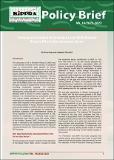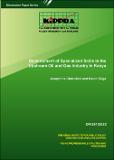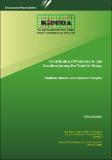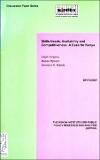Policy Brief No. 16 of 2022/2023 on Training as a Catalyst to Develop a Local Skills Base for Kenya’s Oil and Gas Upstream Sector
| dc.contributor.author | Goga, Kevin | |
| dc.contributor.author | Cherotich, Josephine | |
| dc.date.accessioned | 2023-01-26T07:34:28Z | |
| dc.date.available | 2023-01-26T07:34:28Z | |
| dc.date.issued | 2022 | |
| dc.identifier.uri | https://repository.kippra.or.ke/handle/123456789/4062 | |
| dc.description.abstract | The discovery of oil in Northern Kenya in 2012 was a monumental moment for the country. It revitalized hope to economically spur growth by Kenya potentially becoming an oil producer in the future. Seven years later, the country flagged off its very first export consignment of 200,000 barrels of crude oil, effectively joining the league of oil exporters. This was made possible through the Early Oil Pilot Scheme (EOPS) at Ngamia and Amosi fields commissioned in June 2018 (KNBS, 2020). Yet, amid these wins, the oil and gas industry is plagued with several challenges, including inadequate capacity. The upstream segment of oil and gas, which involves exploration, development, and production of crude oil is the most affected when it comes to human capacity. This is because it is characterized by specialized services that require highly specialized skills, unlike the midstream and downstream counterparts. | en |
| dc.language.iso | en | en |
| dc.publisher | The Kenya Institute for Public Policy Research and Analysis (KIPPRA) | en |
| dc.relation.ispartofseries | Policy Brief;No. 16 of 2022/2023 | |
| dc.subject | Extractive Sector | en |
| dc.subject | Oil Discovery | en |
| dc.subject | Oil and Gas exploration | en |
| dc.subject | Specialized Skills | en |
| dc.subject | Local Skills Base | en |
| dc.title | Policy Brief No. 16 of 2022/2023 on Training as a Catalyst to Develop a Local Skills Base for Kenya’s Oil and Gas Upstream Sector | en |
| dc.type | Other | en |
| ppr.contributor.author | The Kenya Institute for Public Policy Research and Analysis (KIPPRA) | en |
Files in this item
This item appears in the following Collection(s)
-
Policy Briefs [342]




